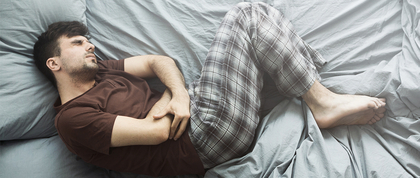
I was motivated to write about chronic pain when my son, a junior in college, had his wisdom teeth extracted. Three days into using his opioid prescription post-surgery, he told me that “it was the only thing that helped him sleep.” In terror I threw out the pills, because of my awareness anecdotally that opioid addiction often begins by using them for an injury or a dental visit. My knowledge enabled me to prevent my son from developing a reliance on opioids for his temporary pain, but what about the dentist’s other patients? Or the millions of Americans who have commonplace medical procedures, or who suffer chronic pain?
In my work as a scientist to understand chronic pain in the U.S., both its causes and treatment, what I discovered was stunning. Pain is not only highly perceptual, but the experience of it increases with financial insecurity. Unfortunately, opioids are often given as a matter of expedience: data revealed they were prescribed to individuals who could not afford better care -- including efforts to improve physical and mental health, which the CDC recommends.
An estimated 20 percent of adults in the U.S. have chronic pain, and 7.4 percent have high-impact chronic pain (HICP), defined as lasting three months or longer and accompanied by at least one major activity restriction. Due to chronic pain and HICP, millions of Americans have suffered a poor quality of life, depression, anxiety, interference with work and family roles, and increased healthcare costs.
The relatively high number of Americans suffering from chronic pain and HICP -- higher than other comparable European countries -- is exacerbated by the financial worries that many Americans experience. In a recent study my colleagues and I demonstrated a strong positive association between financial worries, lower income, chronic pain and HICP.
Our study also found that adults who lived in families in which no one was employed were more likely to experience chronic pain and HICP. The findings persisted after taking into account chronic health conditions and type of employment, and suggested that financial stressors reduce an individual’s tolerance for chronic pain, as well as increase the perception of pain.
Our results confirm earlier studies reporting a strong relationship between poor mental health and financial insecurity or job loss. There’s no doubt that financial debt is associated with higher perceived stress, depression, and poor health. Even among those with coverage, health care costs are a common source of stress. So the increase in stress and pain that we documented in our study may have its source in widening income inequalities, and insecurities related to savings and retirement.
Current pain treatments such as opioids may be expedient, but they don't address the social and economic challenges facing adults. Pain management should include comparable care for people both rich and poor, and involve the improvement of mental health as well as physical health. Physical therapy and mental health care for stress reduction would do much to improve the well-being of individuals, allowing them to avoid a long-term addiction to opioids.

Judith Weissman, PhD, JD, MPH
Visiting Associate Professor of Epidemiology